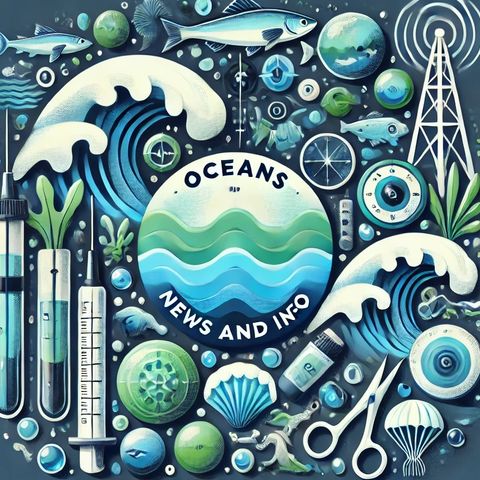Combating the Deadly Threat to Coral Reefs: Stony Coral Tissue Loss Disease (SCTLD)

Download and listen anywhere
Download your favorite episodes and enjoy them, wherever you are! Sign up or log in now to access offline listening.
Combating the Deadly Threat to Coral Reefs: Stony Coral Tissue Loss Disease (SCTLD)
This is an automatically generated transcript. Please note that complete accuracy is not guaranteed.
Description
Coastal communities have long relied on the natural barrier provided by coral reefs to protect them from the devastating impact of hurricanes. These vibrant ecosystems serve as underwater fortresses, dissipating...
show moreSCTLD was first identified in Florida in 2014 and has since spread throughout the Caribbean. It is characterized by the rapid loss of living tissue in hard corals, leading to the death of entire colonies. The disease’s progression is alarming scientists, marine biologists, and communities that depend on reefs for protection and livelihoods.
USGS biologists are diligently working to understand this mysterious disease, peering through microscopes at the tiny polyps and algal cells that make up the structure of coral reefs. These microscopic investigations aim to unlock the secrets of the disease, identify its pathogens, and understand the environmental conditions that facilitate its spread. Despite their size, the polyps play a crucial role in the health and resilience of coral reefs, and any threat to them has far-reaching consequences.
While the direct impacts on corals are alarming, the broader ramifications of SCTLD are immense. Coral reefs are not merely static structures in the ocean; they are bustling ecosystems that support immense biodiversity. Thousands of marine species depend on healthy coral for habitat and food, and any decline in coral health could lead to a cascading effect on the entire food web.
Moreover, the implication for coastal communities and economies cannot be overstated. As SCTLD continues to decimate coral populations, the natural defense barrier provided by coral reefs weakens, leaving coastal areas more vulnerable to storm surges and erosion during hurricanes. This has significant human repercussions, as increased storm damage can lead to costly rebuilding efforts and, at worst, threaten human lives.
In response, scientists and marine conservationists are exploring various mitigation strategies. They are treating affected corals with antibiotics, removing diseased sections to prevent spread, and developing coral nurseries to cultivate and transplant more resilient species. Additionally, research is underway to better understand the genetic factors that may confer resistance to SCTLD in certain coral species. Such efforts could lead to the development of more disease-resistant reefs that could stand the test of changing environmental conditions.
Recognizing the urgent need for cross-disciplinary collaboration, marine scientists have turned to an unexpected ally: veterinarians. Trained in the treatment and understanding of animal diseases, these experts bring a novel perspective to coral health management, applying veterinary techniques to diagnose and treat coral diseases. This interdisciplinary approach highlights the innovative strategies being adopted to combat the pressing threat of SCTLD.
The stakes are high, and the battle against SCTLD is a race against time. Protecting coral reefs from disease is not just a matter of preserving biodiversity; it is crucial for the protection of human communities. Concerted conservation efforts offer a glimmer of hope in safeguarding these precious ecosystems for future generations, ensuring that coral reefs continue to stand as resilient sentinels against the forces of nature.
Information
| Author | QP-4 |
| Organization | William Corbin |
| Website | - |
| Tags |
Copyright 2024 - Spreaker Inc. an iHeartMedia Company

Comments